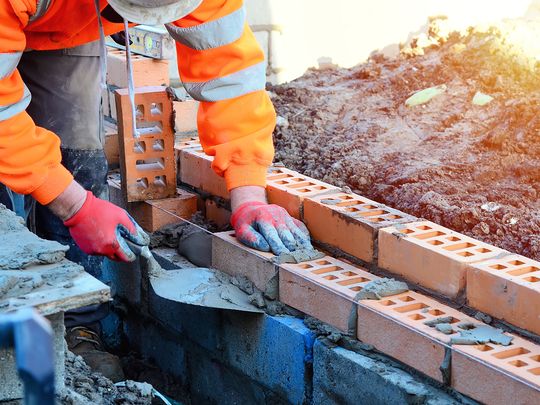
“Often when you think you’re at the end of something, you’re at the beginning of something else,” American TV host and author Fred Rogers once said.
It seems the construction industry has suffered the same fate. In the process of worldwide development, it has accounted for 37 per cent of total global emissions due to cement, steel, and aluminium production.
Denouncing cement, environmentalist Jocelyn Timperley stated that if the cement industry were a country, it would be the third largest emitter in the world.
Concrete, a building material comprising a mix of cement, water, sand, and rock releases over 4 billion tons of carbon dioxide (CO2) annually.
Industry experts describe cement — the binding agent made from limestone and clay, as the ‘most destructive material on earth’.
At the COP28 held in the United Arab Emirates (UAE) early this year, the Emirates reiterated that the building and construction sector was the largest emitter of greenhouse gases (GHGs).
The use of cement will rise, as global urbanisation and economic development increase the demand for new buildings and infrastructure. It is projected to double in the next two decades.
It is estimated that by 2030, cement production will grow to 5 billion tonnes — a 25 per cent increase, whereas, contrarily, the need is to cut global emissions to meet the Paris Agreement’s temperature goals to below 2°C.
In 2015, cement production generated 2.8 billion tonnes of CO2, equivalent to 8 per cent of the global total.
The largest cement producers — China, India, and the US — are significant contributors to global warming. The scale of cement production, driven by the demand for infrastructure and urbanisation, compounds its environmental impact.
The lowdown facts
Producing cement involves heating limestone (calcium carbonate or CaCo3) to high temperatures in a kiln and releasing CO2 as a by-product.
Known as calcination, the procedure is responsible for 50 per cent emissions. The remaining comes from the combustion of fossil fuels to heat the kilns and the energy required to mine and transport the raw material.
Cement is used in construction to bind materials — sand, gravel, and water — to produce concrete and it is used widely as construction material. Its requirement is a principal reason that emissions are considered difficult to eliminate.
However, to mitigate the environmental impacts of cement, sustainable alternatives have been developed.
These include by-products of coal combustion and steel production, which can partially replace cement in concrete and reduce CO2 emissions. Hempcrete, created from hemp plants mixed with a lime-based binder, absorbs CO2.
Experts suggest that the demand for cement can be reduced by crushing concrete and reusing it to construct roads
Reducing emissions
Similarly, ferrock, produced from recycled steel dust and other materials, is carbon-negative. Another option is using industrial waste materials like fly ash, slag, and silica fume to replace a portion of cement, reducing the carbon footprint.
Meanwhile, the cement industry is exploring other innovative mechanisms too to tackle the issue.
Carbon capture and storage (CCS) seizes CO2 emissions from cement production and stores them underground or uses them in industrial processes. It replaces a portion of limestone calcined clay cement (LC3), saving up to 40 per cent of CO2 release.
Using waste materials and biomass as fuel for cement kilns can significantly reduce fossil fuel consumption and associated emissions. Also, implementing advanced digital technologies to optimise production processes and improve energy efficiency can reduce emissions.
Need for new technologies
Cement’s significant contribution to global CO2 emissions necessitates urgent action to find sustainable solutions.
For a 2°C scenario, the road map says, a 24 per cent cut in cement emissions is required. The areas of action comprise lower-emission fuels and lower clinker ratios. It would require 40 per cent more clinker substitutes by 2050.
However, it is to be seen for how long the availability of traditional substitutes like fly ash and blast-furnace slag persists. That’s because access to raw materials like fly ash, a by-product of coal combustion and one of the most-used clinker substitutes, is decreasing, as shutters are downing on coal-fired power plants.
Experts suggest that the demand for cement can be reduced by crushing concrete and reusing it to construct roads. However, the concrete could lose its binding properties unless a new clinker is produced. Therefore, this method is at a contemplative stage.
Meanwhile, the World Cement Association (WCA) has urged industry members to increase efforts to adopt new technologies swiftly to reduce its CO2 emissions in the fight against climate change.
As the famed TV personality Steve Harvey says, “A person has to remember that the road to success is always under construction.”
There’s a need to remove the potholes for a smooth sail.
(Next week the author will discuss other destructive material on earth ‘plastics’)
Dr Abdullah Belhaif Al Nuaimi is Chairman of the Advisory Council of the Emirate of Sharjah









